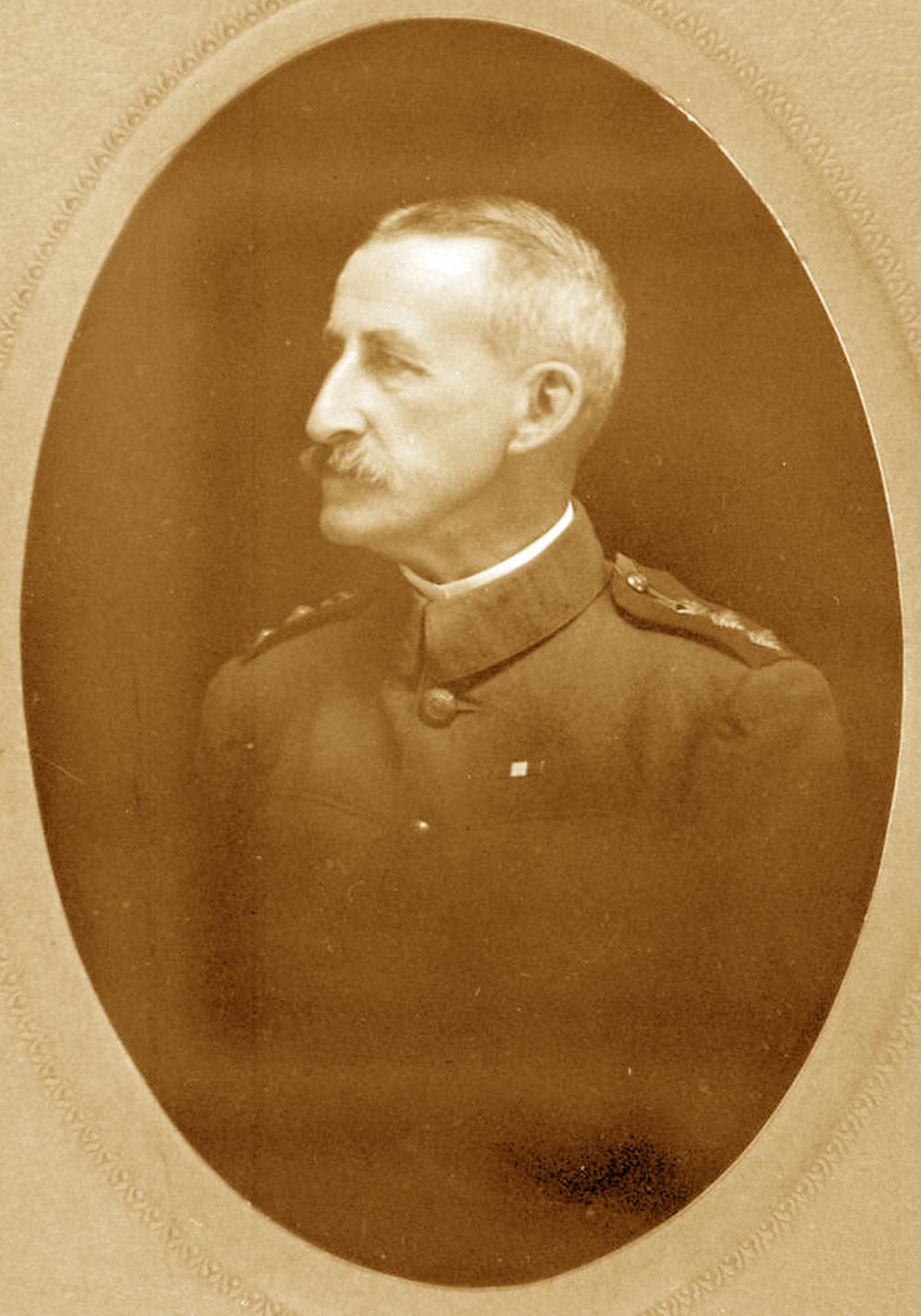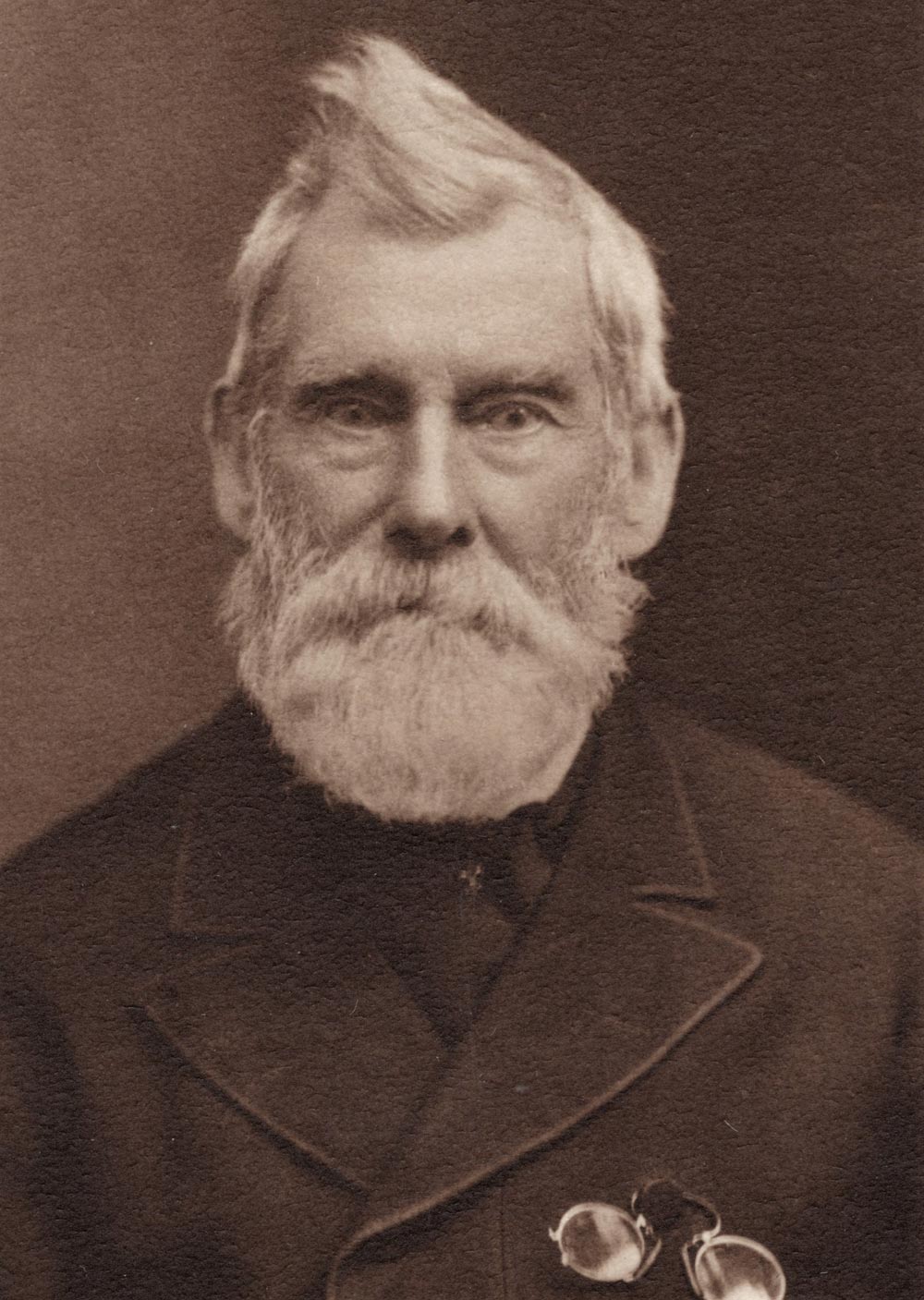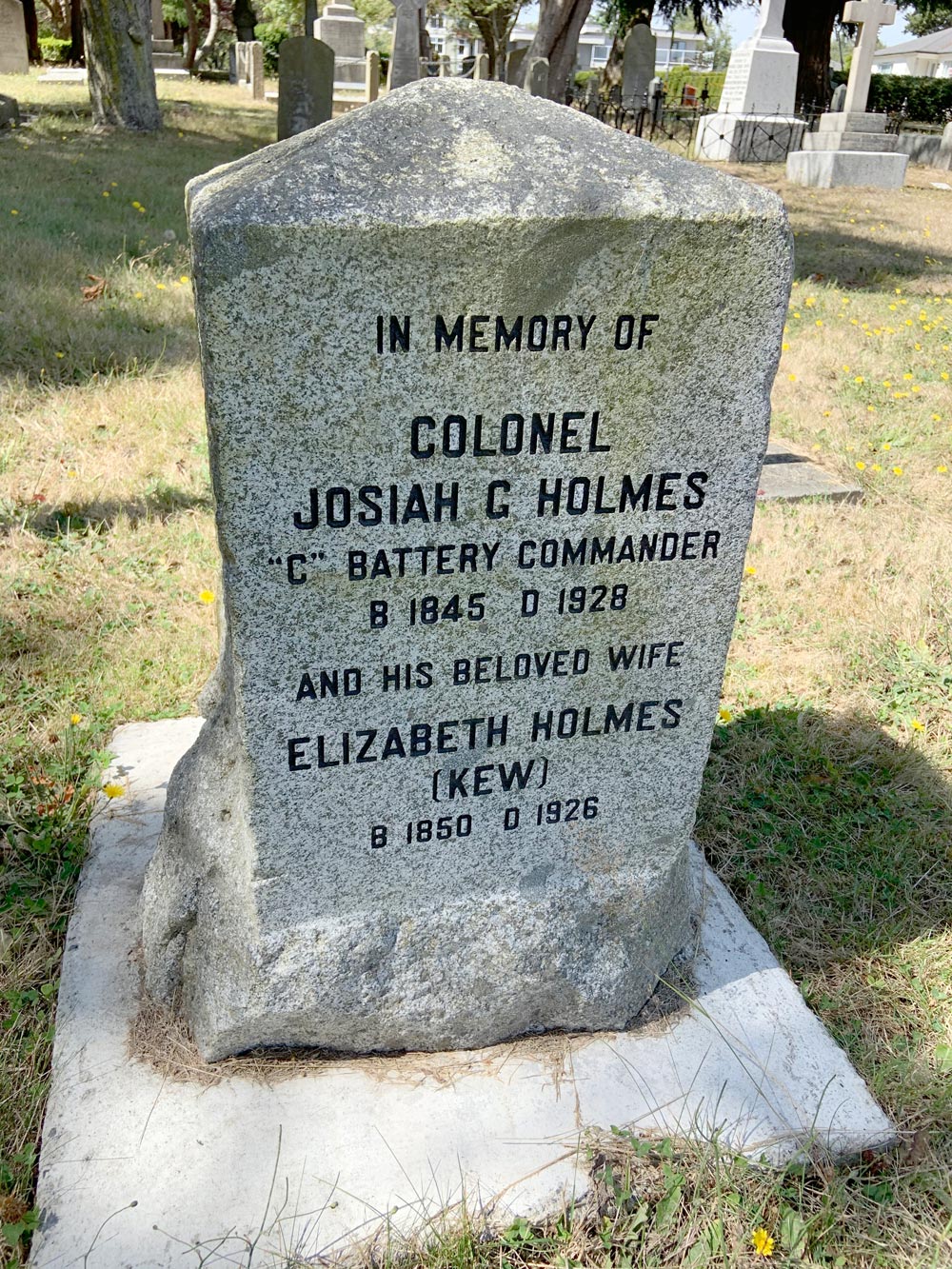
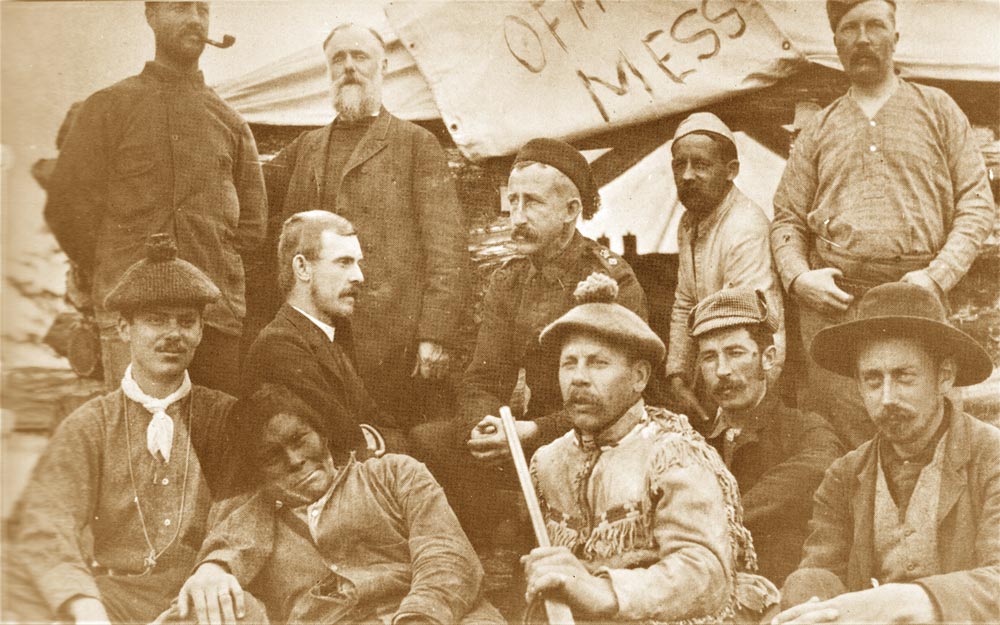
Andrew Oaken
Stag Special
Who was Col Josiah G. Holmes?
Recently, Stag editor Jules Xavier shared with me a photograph of what appeared to be the grave of a high-ranking military officer while visiting historic Ross Bay Cemetery in BC’s capital on Vancouver Island.
In 1871, Col Holmes was one of the founding officers of A Bty in Kingston, Ont. He had the distinction of being the first Commanding Officer (CO) of C Bty in Esquimalt, BC, from 1887 to 1893.
He was the last surviving officer of Canada’s original permanent force.
In part, Canada created A and B Batteries to protect Fort Henry and the Citadel, perform garrison duties after the British left, and serve as Schools of Gunnery. A and B Battery still exists today in sub-units of 1RCHA.
We should remember our great military past and the early trailblazers who helped make it happen. At the RCA Museum, we do not have much on Col Holmes.
We have a few letters from family members, a photo from his 85th birthday, and an image of C Bty on the Skeena River dated 1888. There is more to this exciting story.
Josiah Greenwood Holmes was born on Nov. 10, 1845 in St. Catharines, Upper Canada, and educated at Grantham Academy. He grew up in a respected family.
His father, Thorpe Holmes, was the owner and publisher of the St. Catharines Journal. His father was the founding president of the St. Catharines Rifle Association.
In the early 1860s, as a young volunteer militia soldier, Col Holmes joined the 19th Regiment Lincoln Militia. He fought in the famous Battle of Ridgeway as a volunteer militiaman on June 2, 1866.
In November 1866, then Lt Holmes joined the St. Catharines Garrison Battery, which began a long career in artillery.
He received the Canadian General Service medal with two clasps for the Fenian Raids, 1866 and 1870. He married Elizabeth Kew of Beamsville, Ont., in 1870 and had two sons and three daughters.
In 1871, as a young lieutenant and graduate of RMC, he joined A Bty in Kingston, the first regular component in the Canadian Armed Forces (CAF).
During the 1870s and early 1880s, he served as one of the first adjutants of A Bty. He was a keen rifleman and a member of the Dominion of Canada Rifle Association.
Among his tasks at A Bty was leading the riflemen during public shooting displays. He was a gifted essayist.
In 1878, he won first prize from the Dominion Artillery Association for an essay on the organization of artillery equipment. He also published articles in British service journals.
From 1883 to 1893, Col Holmes commanded Militia District No. 11 in Victoria, BC. In 1883, with the rank of acting Deputy Adjutant General, he started training four batteries of the Militia Coast Brigade — two in Victoria, one in Vancouver, and the other in New Westminster.
The threat of a British war with Russia was indirectly responsible for the initial government consent to plan C Bty in 1883 and the eventual formation in 1887.
It took four long years to implement the required steps to inaugurate the third School of Artillery, C Bty, RCA, in Esquimalt, BC.
Col Holmes was the first C Bty CO from 1887 to 1893. Of note, he commanded the Skeena River Revolt in northern BC in 1888.
In 1893, British soldiers took over permanent garrison duties at Esquimalt and C Bty returned to Quebec. The Canadian Militia reorganized C Bty into No. 2 Company RCGA, and transferred Col Holmes to Winnipeg to command Military District No. 10. He later went to London, Ont., where he was DOC.
From 1898 to 1901, he commanded Military District No. 11 in Victoria, BC, for a second time. He was the District Officer in command from 1901 to 1909.
During his tenure, Col Holmes witnessed many early developmental and organizational changes in the Canadian Army. He was a part of the pre-Confederation Active Militia, whose purpose was, in part, local defence.
He joined one of Canada’s first regular and full-time army units in 1871. In 1883, Canada formed the Permanent Corps and the Regiment of Canadian Artillery.
He was also there for the formation of the Permanent Force in 1892. Additionally, he commanded the third regular and full-time army unit, C Bty, from its founding in 1887 to 1893.
Col Holmes was there when the Artillery changed names to “The Royal Canadian Artillery” in 1893. Two years later, he was there when the Active Militia field and garrison units joined the Regiment.
In 1898, the Permanent Force reorganized into the Field Division and the Garrison Division. These names changed again in 1901 to “Royal Canadian Field Artillery” and “Royal Canadian Garrison Artillery.”
He was also there in 1905 when Canada formed the “Royal Canadian Horse Artillery.” Col Holmes lived through many critical early developments of the Regiment and the CAF.
Col Holmes was a trailblazer and leader of change in the Canadian Artillery. As the first CO of Military District 11, he established local defences and assisted with early law enforcement in BC. He helped merge and organize the permanent force and laid the groundwork for future successors. The Formation of A, B, and C Batteries played a vital role in developing the Canadian Army.
His full-time service with the Canadian Militia and later the Permanent Force lasted for 38 years. He retired in 1909. After retirement, he lived in Victoria, BC, and was an active and respected community member. From 1909 to 1920, he served as the Honourary Colonel of the Rocky Mountain Rangers in Kamloops.
His death on May 17, 1928 at age 83 — meant he was the last of the group of officers of the original Permanent Force of the Dominion.
In his obituary in daily BC newspapers it was written his qualities as a soldier were respected. He inspired discipline among those under him. His efficiency will always be remembered in Canadian military records.
He was buried in the family plot in historic Ross Bay Cemetery with full military honours. His pall bearers included Gen Sir Percy Lake, Gen A.J.L. McNaughton, DOC, and Col (Dr) E.C. Hart. With his casket draped in the Union Jack, it was conveyed on a gun carriage to the cemetery for burial. His wife died two years earlier on Aug. 12 at age 76.
Besides a new modern military grave stone over his grave, a 19th Century granite survey marker from the defunct Work Point Barracks opened in 1887, became another headstone to him and wife, who had died on Aug. 12, 1926 at age 76.
Col Holmes’ son William also had a distinguished military career, when he was the first CO of the 102nd Regiment, Rocky Mountain Rangers. He served in this posting from 1908 to Feb. 1912. He was instrumental in amalgamating all independent rifle companies in BC’s interior.
During the Great War, then LCol Holmes was in command of the 48th Battalion, which was later converted to the 3rd Canadian Pioneer Corps.
At the end of the First World War, he was in command of the Canadian Corps Reinforcement Camp at Etaples, France.
He died at age 82 on July 10, 1954, but was not buried in the family plot alongside his father. Instead, he was buried at Royal Oak Burial Park Cemetery in Victoria, BC.
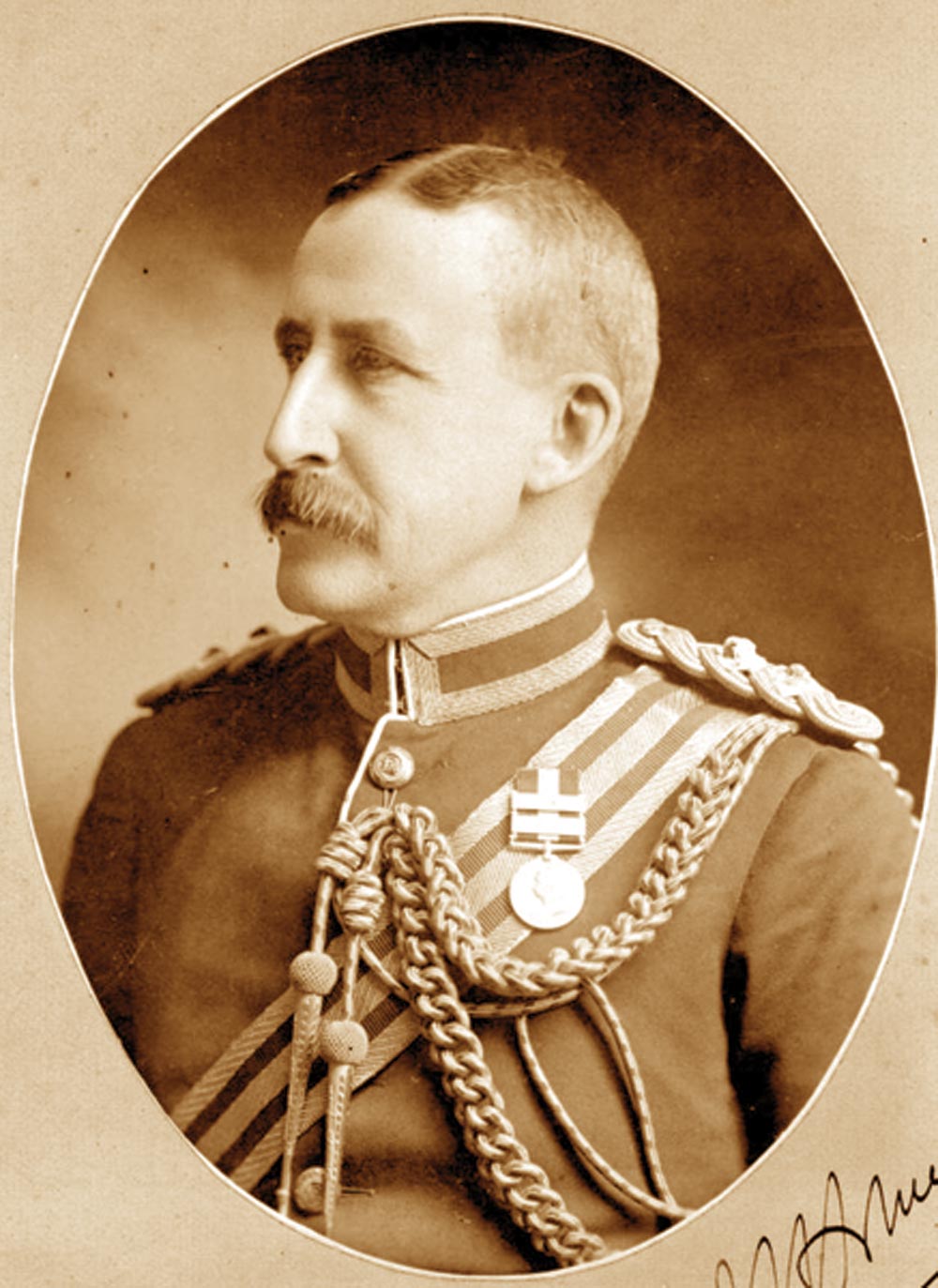
Long retired from military service as CO of C Bty in Victoria, BC, Col Holmes died on May 17, 1928 at age 83. Photo RCA Museum
Stag editor Jules Xavier came across this special memorial to C Bty CO Col Josiah Holmes in the historic Ross Bay Cemetery on Vancouver Island, and shared it with RCA Museum director Andrew Oaken, who then did research to learn more about the artillery officer using his museum’s resources.
A younger Col Josiah Holmes posed for an official photograph. Plus years later, as he aged and grew a beard. Photo BC Archives
Veterans Affairs has also placed one of its own grave markers at the final resting spot of Col Josiah Holmes.
Officer Josiah Holmes sits among his men at an officers’ mess in this undated photograph.
